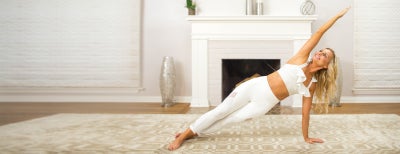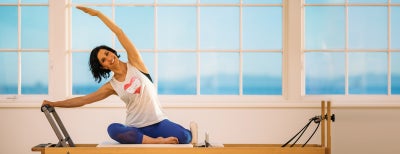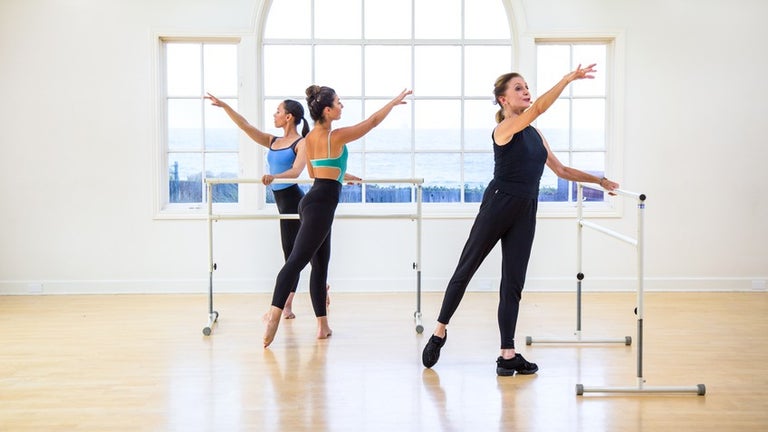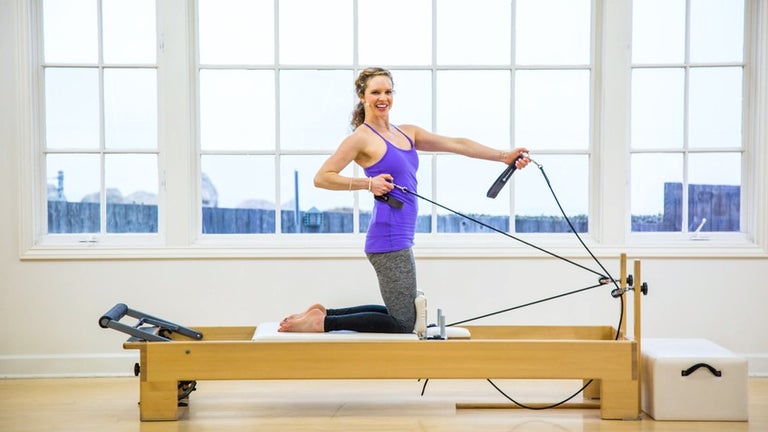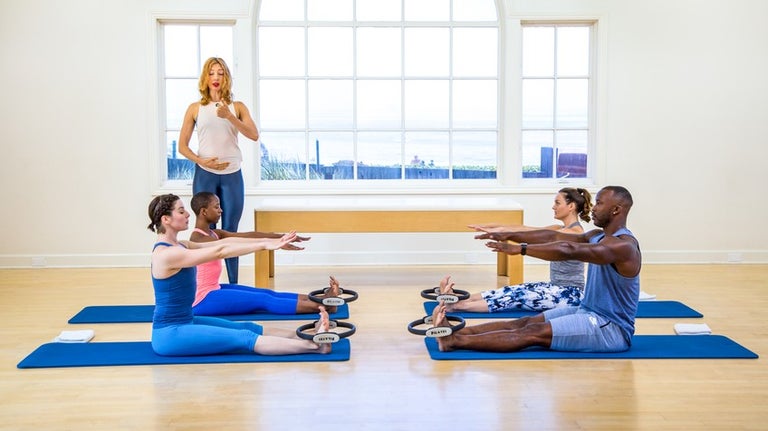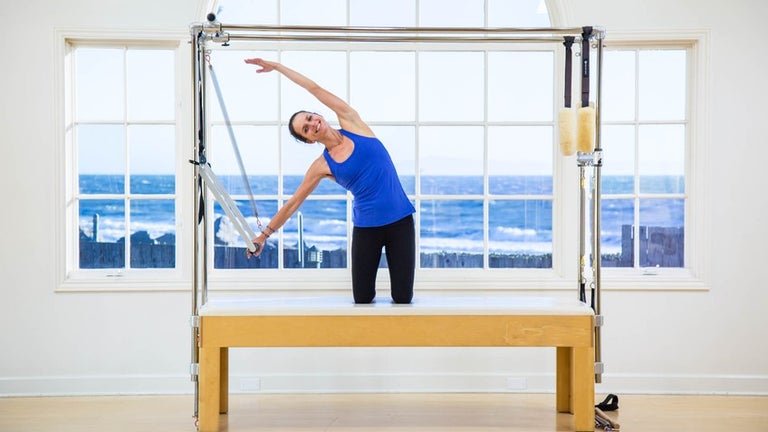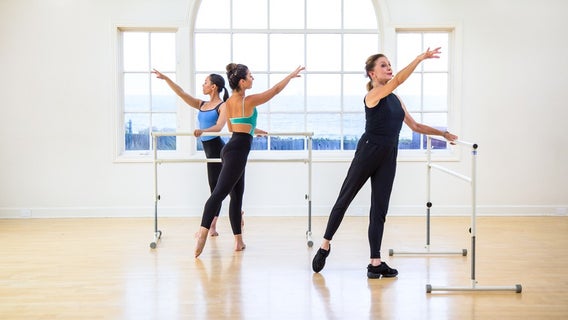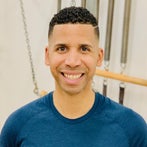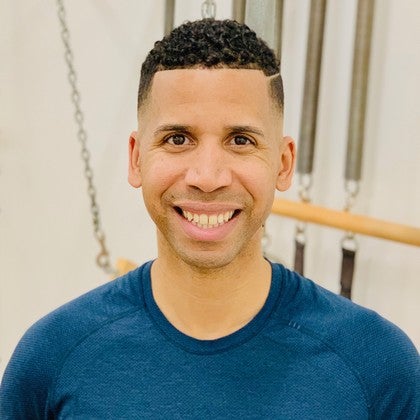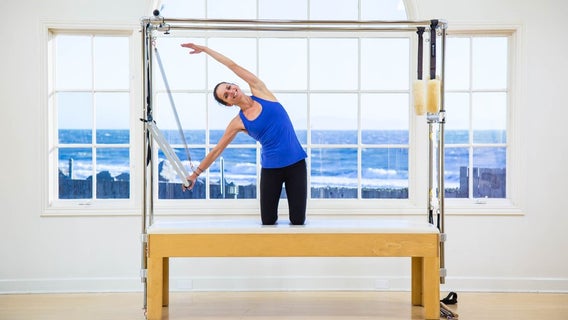Pilates for Beginners Guide
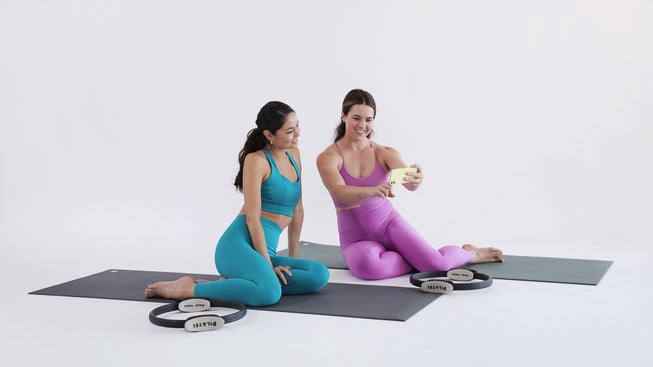
Pilates for Beginners
Pilates is a system of exercise and movement that is designed to increase strength, flexibility, and balance. It integrates breath and movement within proper body mechanics to increase awareness, and use all of the muscles of the body as they were designed. Most of the exercises focus on the pelvis and trunk, utilizing both stability and mobility to train the body. It can be practiced on a Mat using your own body and sometimes small props, or on specialized Pilates Apparatus (the Pilates Reformer is the most common). Pilates classes can occur in one-on-one or group settings. Pilates is for all bodies of all ages. Part of the beauty of the method is that it can be modified to fit the needs and abilities of each individual who practices it.
The Benefits of Pilates
There are so many benefits to Pilates. This includes improved flexibility, balanced muscles on each side of your body, improved posture, better coordination and balance, increased lung capacity, enhanced concentration, increased body awareness, stress management, and injury prevention and rehabilitation. One key benefit is an increase in muscle strength and tone primarily focused on the core muscles, as well as shoulders, arms, legs, and feet. Additionally, Pilates can be practiced anywhere and is suitable for every body of every age. The Core Principles of Pilates include: Concentration, Control, Centering, Breathing, Precision, and Flow.
Brief History of Pilates
Pilates was developed by Joseph Hubertus Pilates. He was born in Germany in 1883. Although stories vary, it is known that he had asthma and other ailments as a child. He studied a wide range of exercises and movement, including the Greek philosophy of mind, body, and spirit, and developed his system to strengthen his own body. In his early years, he worked as a circus performer and boxer. He spent time in an internment camp in England during World War I, and after that began training others in the system he called The Art of Contrology. In 1926 he immigrated to the US, where he met his wife Clara. Together, they opened a studio in New York City, where they taught until his death in 1967. Six of his former students were given Clara’s blessing to teach what then became Pilates. Those individuals are known as The Elders.
Online Pilates for Beginners
Mat Pilates Videos
Reformer Pilates Videos
Mat Pilates
Mat Pilates is a great introduction to Pilates for beginners. You only need a mat to start, and there are over 500 exercises to choose from. It requires no greater commitment than just showing up in a class or exploring an online tutorial from your own home. Mat work, when done with focus and precision is a full body workout. The majority of Mat Pilates practiced and taught includes a specific set of Pilates exercises in a particular order – this is referred to as the Classical Mat Series. Beginner and advanced exercises are included in the Classical protocol, allowing a progression to occur as the body gains balance, strength, and flexibility. But an advanced student can still return to beginner exercises on any given day for a reboot of basic skills or to focus with new understanding for a vigorously challenging workout.
Reformer Pilates
Reformer Pilates is practiced with a machine that utilizes a spring system. A Reformer is made up of a frame and platform bed (generally 7 feet in length and about 2.5 feet wide), a set of risers with pulleys and ropes attached, a footbed, and a sliding carriage which attaches to the springs and gear system. The carriage also has a headrest and shoulder blocks. The springs allow for heavy or light resistance. Often the lighter the resistance, the more difficult the work as the body must always control the movement of the Reformer. Using a Reformer offers support with more difficult exercises via the springs. This allows a beginner to practice exercise they would not yet be strong enough to perform with just their bodies. Reformer work is as appropriate and accessible for the beginner as the advanced student. Reformer instruction by a trained Pilates teacher is most often available in a dedicated Pilates studio or private space inside a gym.
Explore Some of Our Classes
Over 3,700 Pilates videos to choose from in our ever growing Pilates library.
Tips for beginners
The first thing to know about starting your Pilates journey is that you are ready as soon as you choose to try Pilates. You don’t need to be any more fit, flexible, muscular, thin, or young or old than you are at this very moment to begin Pilates! The next step is deciding if you want to begin with Mat or Apparatus (most likely Reformer) Pilates. This may depend on a variety of things, including your budget, accessibility, and if you are dealing with any injuries or ongoing chronic issues. If you have a Pilates studio nearby, ask to drop in and speak to a teacher or even watch a class in progress. You should feel comfortable asking questions and sharing any of your hesitations. This will help them guide you in the right direction. Pilates teachers undergo over 450 hours of training initially and pursue continuing education annually. Their job is to study bodies and teach those bodies how to move with precision and control. You can also explore Pilates from your own home by way of streaming videos.
Two types of Pilates to consider
Classical Pilates sticks closely to Joseph Pilates’ original exercises in the order they were performed. It is most often taught with the pelvis in an imprinted (posterior tilted) position. This means the lower back is pressed to the floor during most exercises. Contemporary Pilates is also based on the work of Joseph Pilates, but exercises have been modified or adjusted and sometimes added to in order to take into account modern research, biomechanics, and physical therapy and rehabilitation. It is generally practiced with a neutral spine, the position the spine is in when standing upright with healthy posture. This means there will be a small space at the lower back, just above the hip bones. There are many varieties within Classical and Contemporary Pilates. The most important thing is to understand your options and choose whichever form makes the most logical sense to you. Choosing to first take formal classes or instruction versus home study, Classical or Contemporary Pilates, group or private classes, and even to begin with Mat or Reformer Pilates is the first step in one of the major benefits of a Pilates practice – self-awareness. Listen to your instincts and don’t be afraid to ask questions. The Pilates community is made up of individuals who love to teach and practice Pilates and want everyone to have access to it!
Meet Some of Our Teachers
More than 180 teachers representing over 40 schools of Pilates.
Beginner Pilates Frequently Asked Questions
How often should a beginner practice Pilates?
A beginner to Pilates should try to practice Pilates at least twice a week, although many people find three times a week to be more effective. You can do Pilates daily. There are many exercises and modifications you can use to avoid over-training.
Is Pilates safe for seniors?
Joseph Pilates believed age was not measured in years, but in the flexibility of your spine. The great news is that although you cannot turn back time, you can start today to increase your flexibility, strength, and improve your balance with Pilates. Pilates is safe for everyone at every age. In fact, Pilates can even be practiced sitting upright in a chair.
How is Pilates different than yoga?
Pilates and yoga are both mind, body, and spirit practices. After that, comparing them is a bit like comparing vegetables and fruits. They are both good for you, but their components are different. Pilates is often described more as functional training. It includes dynamic movement and isometric contractions of muscles throughout each exercise.
How can Pilates complement a workout routine?
Pilates improves balance, strength, and flexibility. This means it can and should be a part of any physical training program or sport you already participate in. From running marathons to playing tennis or lifting weights to walking your dog or chasing your toddler, Pilates will complement your existing exercise routine and even allow you to improve your form, respiratory capabilities, and efficiency.
Join Our Online Community
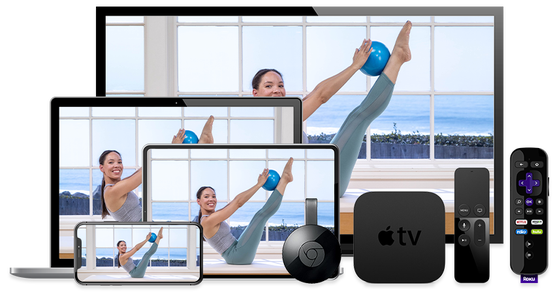
- 15-Day Free Trial
- Unlimited Access to Thousands of Classes
- 95+ Pilates Programs and Challenges
- No Ads
- New Videos Weekly
- Available on All Your Favorite Devices
